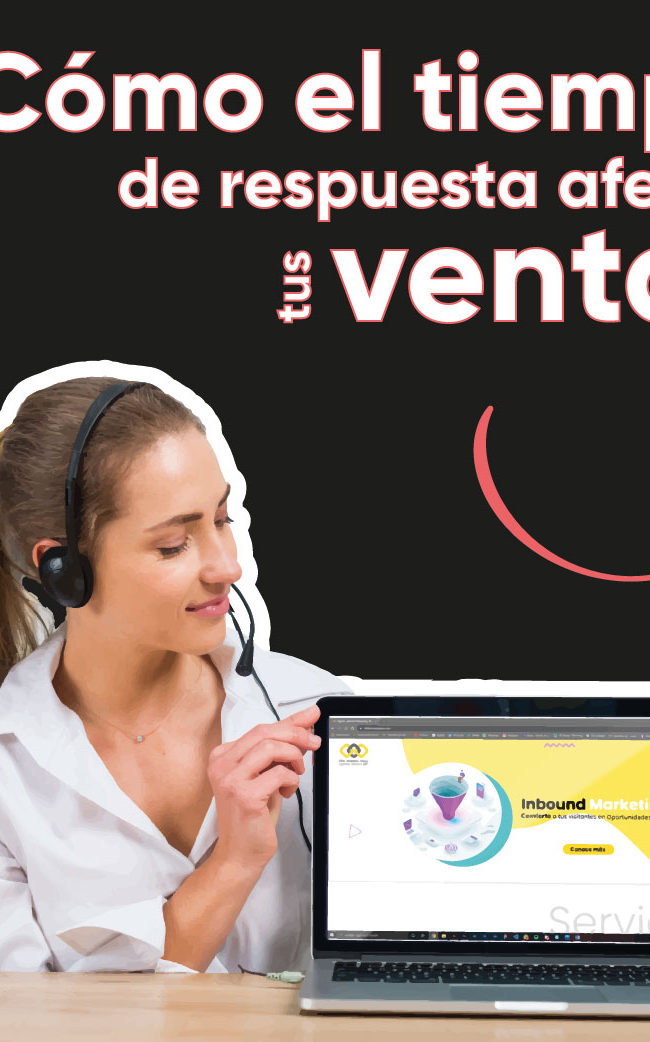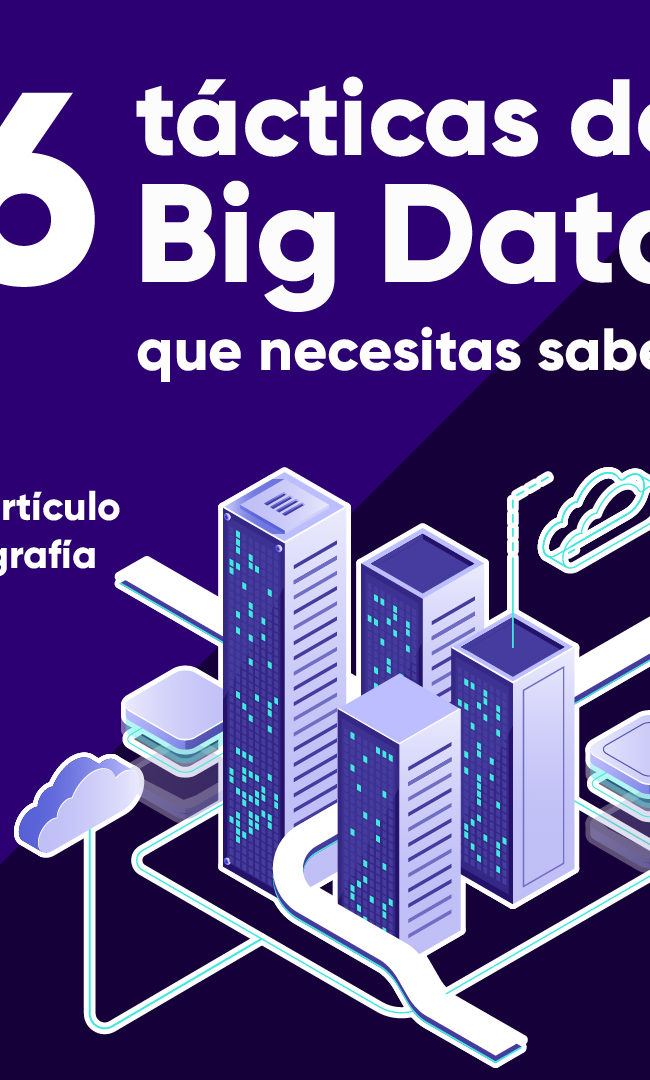
Infoproducts are an essential part of digital marketing strategies and the reason is simple: if they have quality and provide the information your audience needs, they will help you convert more visitors into customers.
There are even businesses dedicated entirely to the infoproducts, which are growing exponentially on the Internet.
No matter what business model you manage, infoproducts are a profitable way to obtain passive income and increase your brand recognition. Here you will know the most used types and how to get the best out of them.
What are infoproducts?
An infoproduct is a digital article where data and information are structured in a specific format to instruct, educate or guide the consumer towards a predefined purpose.
The infoproducts offer valuable content according to the target audience. They are directly related to the author’s area of expertise, who may be an expert with a personal brand or belonging to a company.
The format can be written, audio, video or a combination of these.
A good infoproduct provides a process and the tools for the customer to move from point A to point B. Here are some fictitious examples:
. In the infoproduct “10 Rules for Your Finances”, someone who currently does not know how to manage their money will end up with basic knowledge about personal finances.
. In the infoproduct “All About Interior Design”, the consumer will go from having some notions to possessing tools to start designing their own home.
. In the infoproduct “Advanced Online Marketing Techniques”, those with empirical knowledge of online marketing will learn theory and applicable techniques.
Although they emerged in the era before the Internet, infoproducts are part of the world of digital marketing. Keep in mind that:
. They transform the author’s experience into valuable information.
. They offer applicable content.
. They are aimed at a personal buyer, that is, a sector identified in its tastes, needs and specific challenges.
. They keep their freshness (contenidos perennes o evergreen).
You can launch your first infoproducts for free. This way you will know in depth the content needs of your target audience and you will be able to make adaptations for your final product.
5 benefits of launching infoproducts
. Your content will be available every day of the year and at any time.
. Your customers will be able to study the content at their convenience.
. You will have a passive source of income, since the hours of creation of the infoproduct are minimal compared to the profits you can make.
. You will share your knowledge and add value to the lives of your consumers.
. You will have an element to position your brand as an expert in its field.
How to create successful infoproducts
When planning the creation of your infoproduct, follow these recommendations:
1. Provide information according to your experience
Consider how much knowledge and experience you have on the subject when developing an infoproduct. To start with, you can create short content, dedicated to a less specialized sector.
You can enlist the help of other experts in the field to create more complete and richer infoproducts.
2 . Connect with your audience
Before creating an infoproduct, analyze what your audience is looking for and what types of products they are buying. For example: if you create a product related to “How to Pay Off My Debt” it is unlikely that your audience will buy a monthly membership. However, an ebook that solves their problem may work better.
Focus your infoproduct on the interests and needs of your audience, and integrate those emotions into your material that they can identify with.
3. Guide your audience to get started
The information you provide to your audience should be practical and simple to implement, so that the benefits can be seen soon after implementation.
Be concise in your information and set a specific goal. Show briefly what needs you will meet, as this will synthesise the value of your offer. For example, it’s better to offer an ebook titled “How to use Google Ads to get more leads on your website” than “Guide to using Google Ads”.
Your ultimate goal is to structure your knowledge and experience into an infoproduct and learn how to communicate your message. In this way, your audience will have what it takes to move from point A to point B, as well as talk about you positively – there’s nothing better than a community that says you helped them get started or improve a skill!
What are the best-selling infoproducts?
- Ebooks
- Workbooks or templates
- Online courses
- Webinars (webinars)
- Virtual Conferences
- Membership sites
- Mobile applications
- Audios
1. Ebooks
This is a digital book that can be read on electronic devices. To do so, structure your knowledge in chapters and in a written way. If you want to make the design of your infoproduct more attractive, you can include images.
Its length can vary, from a list of a few pages to an e-book of 100 pages or more. The creation time can vary according to the length of your infoproduct and the richness of its information.
Once you make it, you will focus only on its promotion. Update the material in your ebook whenever the data you used becomes obsolete, or new information arises that supports the topic you discussed. This is a lighter and more unusual job.
Keep in mind that they are simple to create as you only need Adobe Acrobat. Also, most text platforms, such as Microsoft Word, allow you to save your written document in PDF format.
f you want a more elaborate and professional design, you should learn to work with design programs or partner with someone who can format it more elaborately.
How to sell an ebook
You can offer it through specialized ebook platforms such as Kindle, Lulu, Payhip or BookBaby. You can also sell it directly on your website or through an ecommerce platform such as Selz.

Imagen of Lulu
Another place where you can offer it is in websites specialized in the creation of ebooks, where you can also buy the printed copies, like Blurb.
2. Workbooks or templates
This is practically an ebook you can work on and fill out. Structure this format in the form of exercises with formatted spaces so that your clients can complete it.
Sometimes it is sold as an additional tool to an ebook, but you can also promote it on its own.
You will need approximately 2 to 20 hours to complete and format it, depending on your preparation in the process. Design a set of clear steps and exercises. When promoting it, be clear with your audience about what your material contains and what it does not.
The most reliable solution is to use Adobe InDesign to elaborate it and use its forms to fill in. Once saved in an interactive PDF, your customers can complete it electronically.
How to sell a workbook or template
You can sell it on your own website, like Vilma Núñez does. In your case, payment does not involve a monetary amount, but users leave their contact details (which is also valuable).
You can also use an e-commerce platform like Selz.

Imagen of Vilma Nuñez
3. Online courses
It consists of an online program to transfer knowledge and teach step by step how to apply it remotely and virtually.
It is also a passive income. However, creating an online course requires working several hours a week for several months, or spending full time for several days to create a very powerful course.
Keep in mind that you should take the time to answer students’ questions once the course has been released to the public.
For an online course you need a higher level of experience. Much more is expected from a course than from an ebook, for example. So, it is recommended that you raise the level: add in the content interviews with experts or collaborations from other specialists in the field.
If you want to get into the creation of an online course, check Miguel Florido’s guide.
How to sell an online course
An online course can be done in its simplest form: you just email it to your users; or you can develop it as a more elaborate product on a platform with videos, downloads and worksheets.
You can sell access to an online course through an e-commerce platform. For example, Teachable is an ideal host platform.
If your focus is on larger audiences and you have a good budget, you can use platforms like Udemy, which even handles the marketing and promotion of your course. You should consider that although you will reach many more people, you will have less control over the product.
Another option is Coursera, the platform specialized in online courses.

Imagen of Udemy
4. Webinars
The webinar is a one or two hour video that is produced live to address a very specific topic.
Many times webinars are the bait to attract the audience to larger infoproducts, such as a digital membership or courses. They can also sell themselves.
Once you record it, it can become a passive income. However, you will need to record a new one if you develop skills or knowledge to add to your content.
Recording can take one to two hours, plus the time you will spend on planning.
A webinar cannot be sold as easily as a workbook or an ebook; but if it is a very specific and useful topic, which practically solves the client’s need, it can be monetized.
For this infoproduct you should use a special webinar software and be prepared to solve the technical problems that could arise during the transmission.
Some of the tools you can use for your webinar are
- Skype, if you want a free option.
- Facebook or YouTube Live.
- Zoom, which is free for up to 100 attendees in one session.
- Go to Webinar gives you the recording of your webinar with their subscriptions from $89 per month.
Live webinars are challenging because of the technological flaws that may occur; however, they are excellent tools to educate your users, answering their questions in real time, and you can also offer them to continue with you. This shortens the learning curve for your clients to achieve the results they are looking for.
How to sell a webinar
If you are going to sell your webinar online, you need:
- A call (through your website or your social networks).
- A registration page.
- A broadcast platform.
- Prepare the sales offer.
- A payment site.
In your offer you can include an exclusive gift for customers who buy the launch of your video, as this will help you have more sales. For example, if you offer a dog education webinar, you can give away an ebook with specific tasks such as: “Teach your pet the basics” or “How to choose the right food for my dog”.
If you want to sell your webinar on demand, you can use EverWebinar. In this mode the client decides when to see them. You can also use the ClickFunnels platform.

Imagen of EverWebinar
5. Virtual Conferences
Just like an offline conference, a virtual summit provides knowledge from various experts and speakers who teach about a particular sector. In this case, it consists of access to several integrated videos and webinars.
Virtual conferences can be created around more general topics. For example, an offer about “How to better manage your personal finances” can have several speakers talking about different aspects related to the topic: how to manage your debts, how to use credit and how to reduce your expenses, for example.
Like a face-to-face lecture series, producing such an event is quite time and effort consuming. You must manage with your speakers the dates, times and topics to be covered; make sure everything works perfectly when it comes to technology. Keep in mind that prices vary according to the depth of information and the speakers.
How to sell a virtual conference
You can sell it directly on your website or on a specific landing page for the event. Promote it on your social networks and digital channels, as well as on the digital channels of your speakers.
This is the strategy followed even by some of the most important virtual summits, such as the HR Virtual Summit that brings together more than 30 thousand speakers every year. All its sessions are virtual, including presentations and group activities.

Image of HR Virtual Summit
6. Membership sites
Create an entire site, or a section within your site, where only those who pay a membership can access it.
This type of infoproduct is ideal for certain areas in which an audience needs to be updated, for example: finance, taxes, law and other similar professional topics.
It is also an excellent avenue for content on fitness, lifestyle and other interests that require constant progression.
How to sell a virtual membership
For paid memberships you need to purchase specialized membership software such as AMember, Easy Member Pro or YourMembership (in case you have a WordPress site).
On the Reflexion Yoga site they use an eye-catching and direct design to get more members.

Image of Reflexion Yoga
For visitors to decide to sign up, they need to know about you in depth, either because they’ve known about your brand for a long time or because your website contains videos, articles and other resources that clearly show why it’s in their best interest to sign up. Focus on the value membership will have for their personal lives or for their professional endeavors, depending on the type of offer you make.
7. Mobile Applications
We all have more than one app on our mobile devices. An app allows users to relate and connect interactively with your information.
This infoproduct requires a good investment of time to structure and code the app, as well as the generation of the content of each of the sections that make it up.
How to sell an app
To create an app, you need to know how to develop it or hire an expert to program it. The way to sell it is through the two most used device stores: Play Store and App Store, respectively.

Image of Play Store
The best thing to do is to make a free version and a paid version. It provides some of the most important features within the free app, as it will give high expectations about the paid features.
You can also add advertising, which will bring in revenue. However, you must take into account the user experience so that the ads are not invasive.
8. Audios
Any current electronic device (computer, mobile phone or tablet) allows you to record audio. Once you have written your ebook, you can read it and record it. This way, you have another version of your infoproduct as an audiobook. You could also create a podcast, that is, a series of audios where you talk about certain topics, either on your own or in the company of guests.
How to sell a podcast or audiobook
One of the recommendations when selling an audio is that you release free content that leaves your audience wanting more, whether it’s specific information or conveys a certain exclusivity.
The classic option for podcasts is to share them on iTunes, where you have the opportunity to set a price.
You can also add your audios (such as audiobooks or serials) to your digital library. If you use WordPress, you can use a plug-in such as Compact WP Audio Player. To receive an amount you can use the PayPal platform, which works internationally, or any other electronic payment method.
Jocko Willink is one of the entrepreneurs who has a resounding success with his podcast. What’s interesting is that he shares it on his website as well as on his YouTube account and iTunes. In his case, the chapters are freely accessible, but this strengthens his personal brand, in which he also has many books for children and adults.

Image by Jocko Podcast
Once you have your product created and online, it’s time to promote it. Do it on your own site, find partnerships with other brands relevant to your audience, post ads on your social networks and get ready to receive more revenue!




